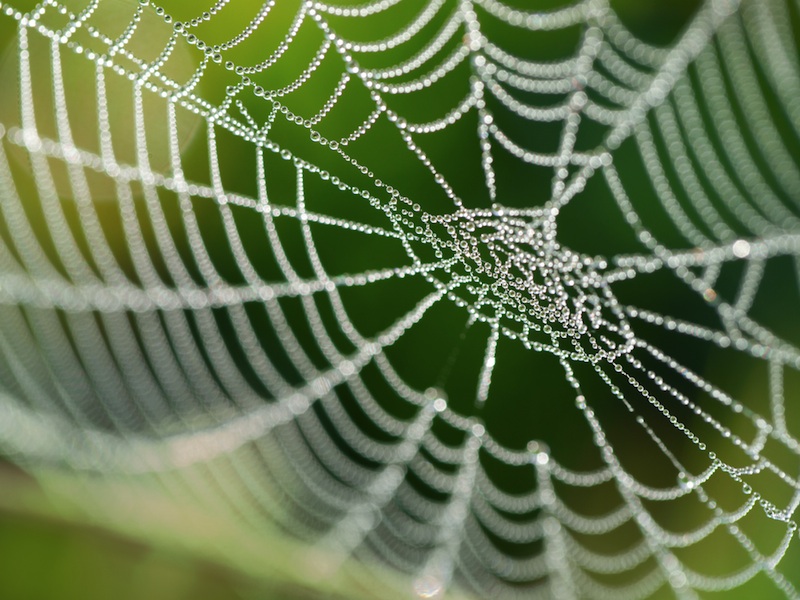Spider Silk May Act as Pest Repellent

Spider silk can be scary enough to insects to act as a pest repellent, researchers say.
These findings could lead to a new way to naturally help protect crops, scientists added.
Spiders are among the most common predators on land. Although not all spiders weave webs, they all spin silk that may serve other purposes. For instance, many tiny spiders use silk balloons to travel by air.
Researchers suspected that insects and other regular prey of spiders might associate silk with the risk of getting eaten. As such, they reasoned silk might scare insects off.
The scientists experimented with Japanese beetles (Popillia japonica) and Mexican bean beetles (Epilachna varivestis). These plant-munching pests have spread across eastern North America within the past half-century. [Ewww! Nature's Biggest Pests]
The beetles were analyzed near green bean plants (Phaseolus vulgaris) in both the lab and a tilled field outdoors. The investigators applied two kinds of silk on the plants — one from silkworms (Bombyx mori) and another from a long-jawed spider (Tetragnatha elongata), a species common in riverbank forests but not in the region the researchers studied.
Both spider and silkworm silk reduced insect plant-chewing significantly. In the lab, both eliminated insect damage entirely, while in the field, spider silk had a greater effect — plants enclosed with beetles and spider silk experienced about 50 percent less damage than leaves without spider silk, while silkworm silk only led to about a 10 to 20 percent reduction. Experiments with other fibers revealed that only silk had this protective effect.
Sign up for the Live Science daily newsletter now
Get the world’s most fascinating discoveries delivered straight to your inbox.
"This work suggests that silk alone is a signal to potential prey that danger is near," researcher Ann Rypstra, an evolutionary ecologist at Miami University in Hamilton, Ohio, told LiveScience.
Rypstra was most surprised that the effect occurred even though the species involved do not share any evolutionary history together as predator and prey. This suggests "herbivores are using the silk as some sort of general signal that a spider — any ol' spider — is around and responding by reducing their activity or leaving the area," she said.
While more work will need to be done before this research might find applied use, the fact that the presence of silk alone reduced damage caused by two economically important pest insects "suggests that there could be applications in agricultural pest management and biological control," Rypstra said.
Rypstra is also interested in the chain reaction of events that silk might trigger in an ecosystem.
"For example, if an herbivore encounters a strand of silk and alters its behavior in a particular manner, does that make it more susceptible to predation by a non-spider?" Rypstra asked. "Do spiders that leave lots of silk behind have a larger impact in the food web, and how does it vary from habitat to habitat? These are just a couple of questions that we might be exploring in the near future."
Rypstra and her colleagues detailed their findings online Nov. 28 in the journal Biology Letters.
Follow LiveScience on Twitter @livescience. We're also on Facebook & Google+.











